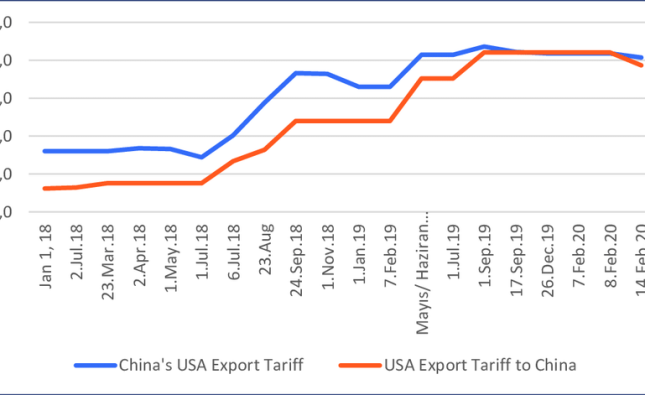
Financial risk management is crucial for any business or financial institution aiming to stay competitive in today’s fast-paced economic environment. The advent of Artificial Intelligence (AI) has revolutionized the way companies manage financial risks, making processes faster, more accurate, and increasingly proactive. By adopting AI-driven tools, businesses can enhance their ability to predict, analyze, and mitigate risks. This article explores the growing role of AI in financial risk management, its benefits, challenges, and the future impact of AI technologies in this field.
Understanding AI in Financial Risk Management
AI in financial risk management refers to the use of machine learning algorithms, data analytics, and predictive modeling to identify, assess, and manage various financial risks. These risks include market risk, credit risk, operational risk, and liquidity risk. AI tools can analyze vast amounts of data in real-time, identify patterns, predict potential risks, and offer actionable insights. By doing so, AI enables financial institutions to reduce risk exposure, enhance compliance, and improve decision-making.
Key Benefits of AI in Financial Risk Management
AI brings several advantages to financial risk management, offering enhanced accuracy, speed, and predictive capability. Below are some of the primary benefits:
1. Improved Data Analysis and Pattern Recognition
AI can process large amounts of structured and unstructured data, identifying patterns that may go unnoticed by human analysts. This ability helps financial institutions identify trends, anomalies, and risks more accurately.
2. Real-Time Monitoring and Predictive Analysis
Traditional risk management methods often rely on historical data, which may not capture real-time risks. AI can continuously monitor market trends, credit ratings, and economic indicators, providing timely insights and proactive alerts for potential risks.
3. Enhanced Fraud Detection
AI algorithms excel in recognizing suspicious activities and fraud patterns, helping institutions to detect fraudulent transactions in real-time. Machine learning algorithms learn from past data, making fraud detection systems more robust over time.
4. Cost Efficiency
Automating risk assessment processes reduces the need for manual data handling, lowering operational costs and human error. This streamlined approach enables financial institutions to allocate resources more efficiently.
5. Regulatory Compliance
AI can help institutions stay compliant with complex regulatory requirements by analyzing data for compliance violations, generating reports, and ensuring that risk management practices adhere to legal standards.
Applications of AI in Financial Risk Management
AI’s capabilities extend to various applications in financial risk management. Here are some of the most impactful uses:
1. Credit Risk Assessment
AI models analyze credit histories, transaction records, and other financial behaviors to assess an individual’s or organization’s creditworthiness. This technology allows banks to approve or decline credit with greater accuracy and speed.
2. Market Risk Analysis
Financial markets are volatile, and market risk can have a significant impact on investments. AI-driven algorithms analyze market movements, economic indicators, and investor sentiment to forecast risks and opportunities, helping businesses make informed decisions.
3. Liquidity Risk Management
Liquidity risk occurs when institutions struggle to meet their short-term obligations. AI tools monitor cash flow and liquidity trends, alerting managers when liquidity risks are high and suggesting corrective actions to prevent cash flow issues.
4. Operational Risk Management
AI assists in identifying operational risks, such as process inefficiencies and human errors, which can affect an organization’s ability to operate smoothly. AI-driven process automation can reduce these risks by minimizing reliance on manual processes.
5. Fraud Detection and Prevention
As financial fraud becomes increasingly sophisticated, AI-powered fraud detection systems are essential. These systems analyze real-time transaction data, flagging irregularities and alerting financial institutions to possible fraud.
Challenges and Limitations of AI in Financial Risk Management
While AI has a transformative impact on financial risk management, it faces certain challenges:
1. Data Quality and Privacy Issues
AI models are only as good as the data they are trained on. Poor-quality or biased data can lead to inaccurate predictions. Furthermore, financial institutions must ensure compliance with data privacy laws when using customer data.
2. Model Interpretability
Many AI models, especially deep learning models, operate as “black boxes,” making it difficult to understand their decision-making processes. This lack of transparency can be a barrier in regulatory compliance and risk assessment, as institutions may struggle to explain AI-driven decisions.
3. Cybersecurity Risks
The increasing reliance on AI and digital data makes financial institutions more vulnerable to cyberattacks. AI systems need robust cybersecurity measures to prevent data breaches, fraud, and cyber threats.
4. High Implementation Costs
Developing and implementing AI solutions require significant upfront investment, as well as ongoing maintenance and skilled personnel. This can be a barrier for smaller institutions that lack the resources for advanced AI integration.
5. Ethical and Regulatory Challenges
The use of AI in financial services raises ethical concerns, particularly regarding decision-making bias and customer privacy. Regulatory bodies are still catching up with AI advancements, meaning institutions need to navigate compliance in a constantly evolving regulatory landscape.
Comparative Table: Traditional vs. AI-Driven Financial Risk Management
| Aspect | Traditional Risk Management | AI-Driven Risk Management |
|---|---|---|
| Data Processing | Manual, slower | Automated, real-time |
| Pattern Recognition | Limited | Advanced, detects complex patterns |
| Fraud Detection | Reactive | Proactive, real-time |
| Cost Efficiency | High due to manual labor | Lower due to automation |
| Predictive Accuracy | Limited | High |
| Compliance | Requires manual oversight | Enhanced through AI-driven monitoring |
Analysis Table: Key Benefits and Challenges of AI in Financial Risk Management
| AI in Financial Risk Management | Benefits | Challenges |
|---|---|---|
| Data Analysis | Faster and accurate pattern recognition | Data quality and privacy concerns |
| Real-Time Monitoring | Provides proactive risk assessment | Cybersecurity risks |
| Cost Efficiency | Reduces operational costs | High initial setup cost |
| Fraud Detection | Real-time fraud detection and prevention | Requires continuous updates |
| Regulatory Compliance | Easier adherence to regulatory standards | Ethical and regulatory concerns |
The Future of AI in Financial Risk Management
The role of AI in financial risk management is expected to grow, with new technologies continually emerging to improve efficiency and accuracy. Future AI models will likely integrate more sophisticated machine learning techniques, such as natural language processing (NLP), to analyze textual data like news, reports, and social media posts for sentiment analysis. Such advancements will allow institutions to understand market sentiment and make better-informed decisions.
Additionally, the development of explainable AI (XAI) will address the “black box” challenge, enabling institutions to understand and justify AI-driven decisions. As AI in financial risk management becomes more transparent and interpretable, regulatory compliance will become easier, and client trust in AI-driven processes will increase.
The Role of Machine Learning in Predictive Risk Analysis

Machine learning, a branch of AI, plays a vital role in predictive risk analysis by identifying patterns and trends in financial data that may signal potential risks. Unlike traditional models that rely heavily on past data, machine learning models can adapt and improve their accuracy over time by continuously learning from new information. This adaptability allows financial institutions to refine their predictive risk models and detect emerging risks more quickly. Machine learning also helps banks and financial firms to better assess loan applications, portfolio risks, and even economic downturns, providing actionable insights that can be used to minimize exposure and optimize financial strategies.
Enhancing Customer Experience While Managing Risk
AI in financial risk management isn’t only about reducing threats; it also significantly enhances the customer experience. For example, AI-powered chatbots and virtual assistants can provide real-time support to customers, answering questions about their accounts or potential risks. Additionally, AI algorithms can customize financial products and services based on the risk profile of individual customers, allowing for personalized financial advice that aligns with their risk tolerance and investment goals. By using AI to balance customer satisfaction with prudent risk management, institutions can build stronger, more trustworthy relationships with their clients, which ultimately supports long-term growth.
Addressing Ethical and Bias Concerns in AI Models
As powerful as AI is, it comes with ethical challenges, especially concerning bias in decision-making models. If AI models are trained on biased data, they can unintentionally perpetuate or even amplify existing inequalities. For example, AI models assessing credit risk may unfairly disadvantage certain groups if they rely on historical data that includes biased patterns. Financial institutions must therefore take steps to ensure that AI systems are transparent, accountable, and fair. Many firms are now exploring “ethical AI” practices and incorporating fairness algorithms to mitigate bias. This focus on ethical AI ensures that risk management processes do not unfairly impact customers and remain in line with legal and regulatory standards.
The Importance of Collaboration Between Human Experts and AI
Despite AI’s extensive capabilities, human expertise remains essential in financial risk management. While AI can process and analyze data at speeds unattainable by humans, interpreting these insights within the context of complex market and regulatory environments often requires human judgment. Therefore, collaboration between AI systems and human experts creates a balanced approach, where AI enhances efficiency and accuracy, and human oversight ensures thoughtful decision-making. This partnership allows for the integration of AI insights with industry knowledge, fostering a risk management strategy that is both technologically advanced and aligned with human intuition and expertise. This blend of AI and human input is key to managing financial risks effectively in an increasingly digital world.
Conclusion
AI is reshaping financial risk management, offering powerful tools to predict, analyze, and mitigate risks with speed and accuracy. From real-time monitoring and fraud detection to compliance and operational efficiency, AI’s benefits are profound, though not without challenges. Institutions that embrace AI-driven financial risk management stand to gain a competitive edge, though they must address issues like data privacy, cybersecurity, and ethical considerations.
As AI technology continues to evolve, its role in financial risk management will likely expand, making it an indispensable asset for forward-thinking financial institutions. By leveraging AI in a responsible and strategic way, organizations can better protect themselves from financial uncertainties and seize growth opportunities in an increasingly complex economic landscape.










